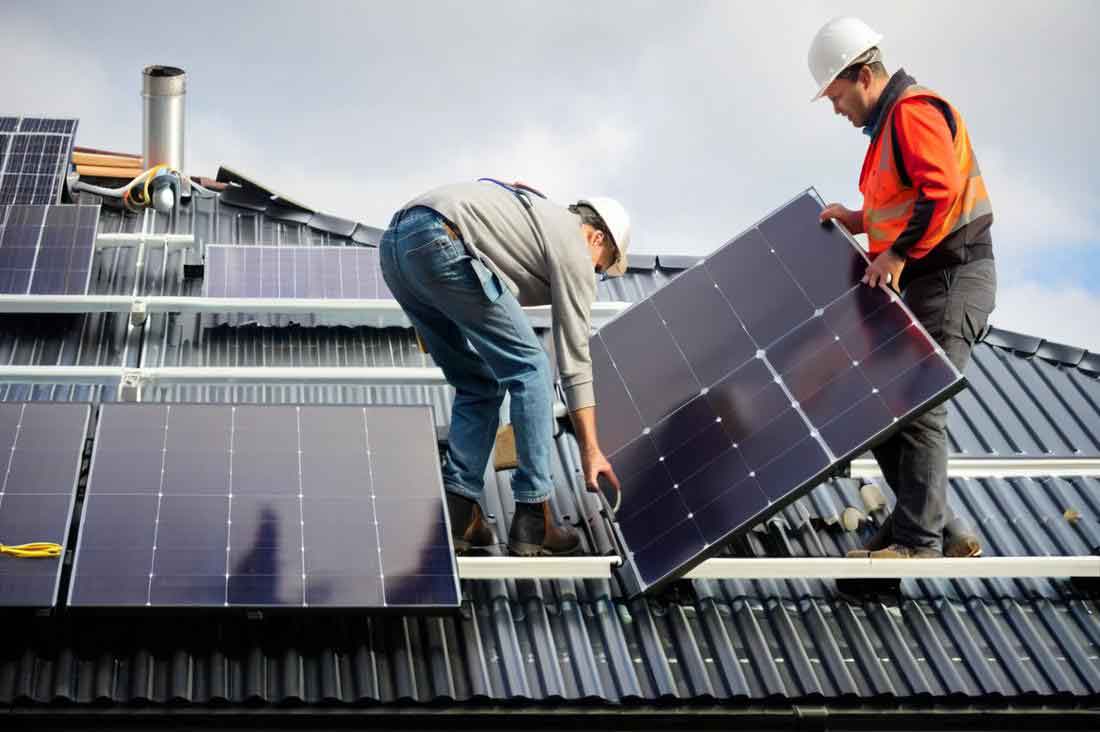
With the increasing penetration of renewable energy sources, energy storage inverters have become critical components for stabilizing power systems. This study proposes a fuzzy adaptive control strategy for grid-connected energy storage inverters integrated with Virtual Synchronous Generator (VSG) technology to address low inertia and insufficient damping in photovoltaic (PV)-battery systems. The proposed method enhances frequency support and dynamic stability while ensuring low harmonic distortion.
System Configuration and VSG Algorithm
The three-level neutral-point-clamped (NPC) topology is adopted for the energy storage inverter, which reduces voltage and current Total Harmonic Distortion (THD) to 0.02% and 0.01%, respectively. The system consists of:
- PV arrays with maximum power point tracking (MPPT)
- Bidirectional Buck/Boost converter for battery management
- VSG-controlled three-level inverter
The VSG algorithm emulates synchronous generator dynamics through the rotor motion equation:
$$ J\frac{d\omega}{dt} = \frac{P_m}{\omega_0} – \frac{P_e}{\omega_0} – D(\omega – \omega_0) $$
where \( J \) = virtual inertia, \( D \) = damping coefficient, \( \omega_0 \) = rated angular frequency, and \( P_m/P_e \) = mechanical/electrical power.
Fuzzy Adaptive Control Design
The fuzzy controller adjusts \( J \) and \( D \) based on angular frequency deviation (\( \Delta\omega \)) and its rate of change (\( d\omega/dt \)). Key constraints include:
| Parameter | Lower Bound | Upper Bound |
|---|---|---|
| Moment of Inertia (J) | $$ J_{\text{min}} = \frac{\Delta P_{\text{max}}}{2\pi\omega_0 \cdot \text{RoCoF}_{\text{max}}} $$ | Limited by energy storage capacity |
| Damping Coefficient (D) | Determined by stability margins | |
The fuzzy rule base for parameter adaptation is designed as:
| Δω/dω/dt | NL | NS | ZO | PS | PL |
|---|---|---|---|---|---|
| NL | PL | PL | NS | NS | NS |
| NS | PL | PS | PS | NL | ZO |
| ZO | PS | ZO | ZO | ZO | NL |
Stability Analysis and Simulation
The closed-loop transfer function of VSG active power control is derived as:
$$ \phi(s) = \frac{\frac{M_t}{J\omega_0}}{s^2 + \frac{D\omega_0 + K_w}{J\omega_0}s + \frac{M_t}{J\omega_0}} $$
where \( M_t \) represents torque coefficients. Simulation results demonstrate:
| Control Strategy | Frequency Overshoot | Settling Time |
|---|---|---|
| Fixed-parameter VSG | 0.21 Hz | 0.8 s |
| Conventional Adaptive | 0.14 Hz | 0.6 s |
| Fuzzy Adaptive | 0.12 Hz | 0.4 s |
The energy storage inverter maintains DC bus voltage at 750 V with ±2.67% fluctuation, while the three-level NPC topology achieves THD levels below 0.03%.
Conclusion
This study presents a fuzzy adaptive control strategy for energy storage inverters that effectively coordinates virtual inertia and damping coefficients. By integrating VSG technology with intelligent parameter adaptation, the proposed method enhances grid stability under renewable energy fluctuations while maintaining superior power quality through advanced three-level conversion topology.
